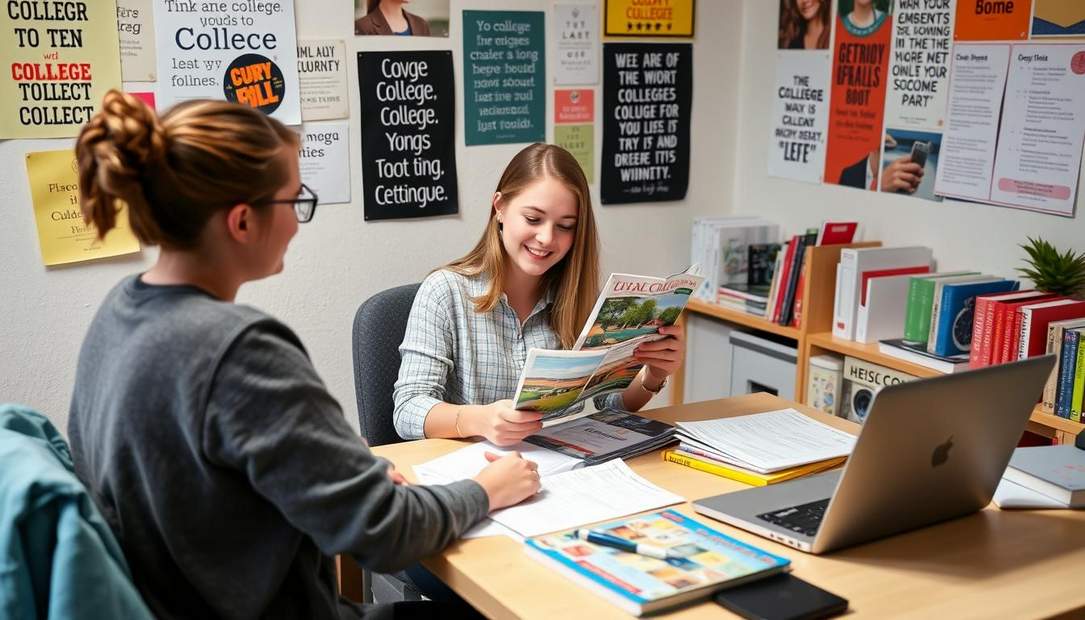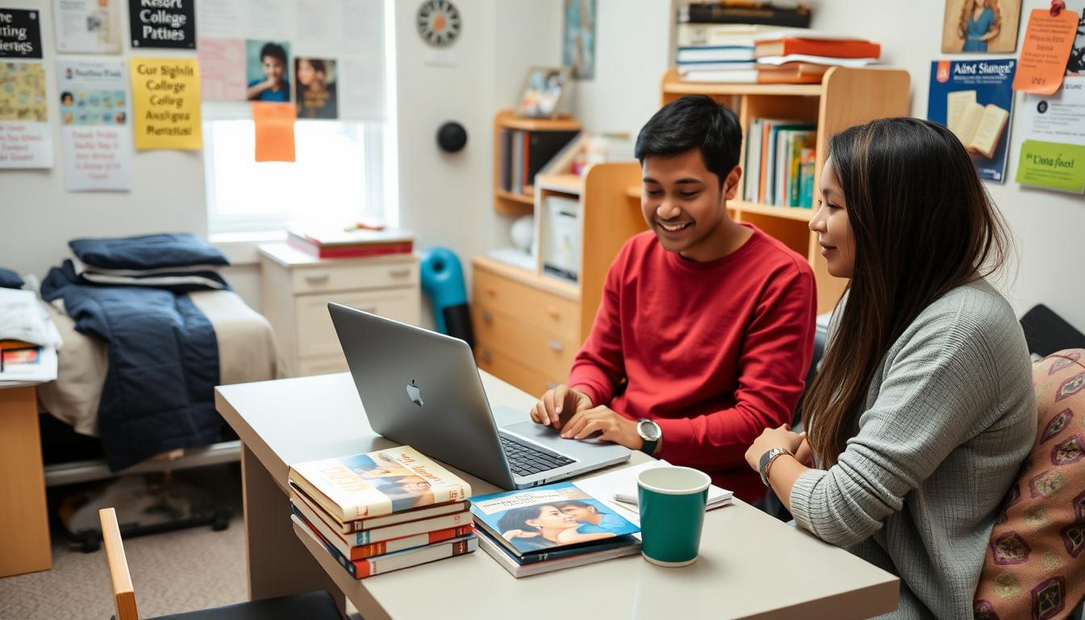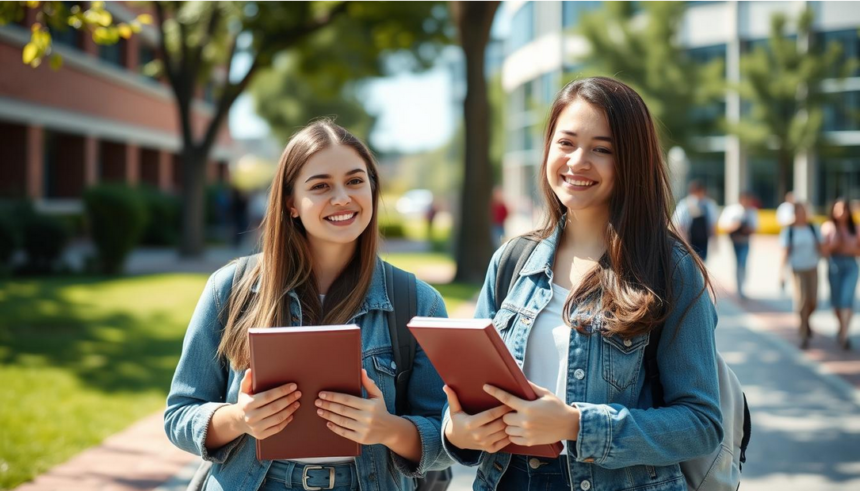Beyond the Classroom: Redefining U.S. Education for the Future.
The U.S. education system is at a turning point. With fast-paced technology and changing society, we need new ways to learn. It’s time to move beyond old classroom setups and use fresh teaching methods. This change is not just small tweaks but a big shift in how we teach the next generation.
- The Current State of American Education: Challenges and Opportunities
- Understanding Traditional Education Limitations
- Identifying Areas for Immediate Improvement
- Key Stakeholders in Educational Change
- Technology Integration: Transforming Learning Spaces
- Student-Centered Learning: Personalizing Education for Success
- Redefining U.S. Education for the Future
- STEAM and Interdisciplinary Approaches
- Equity and Accessibility in Modern Education
- Skills-Based Learning for Tomorrow’s Workforce
- Teacher Training and Professional Development
- Community and Family Engagement Strategies
- Sustainable and Environmental Education Initiatives
- Global Perspectives and International Collaboration
- Conclusion
- FAQ
- What are the main challenges facing the current U.S. education system?
- How can technology transform the learning experience in U.S. classrooms?
- What is the importance of STEAM (Science, Technology, Engineering, Arts, and Mathematics) and interdisciplinary approaches in modern education?
- How can schools ensure equity and accessibility in modern education?
- What skills-based learning approaches are important for preparing students for the future workforce?
- What role do teachers play in the process of education reform?
- How can community and family engagement strategies enhance the educational experience?
- What are the benefits of incorporating sustainable and environmental education initiatives in U.S. schools?
- How can global perspectives and international collaboration benefit U.S. education?
The current education system in the U.S. has been good in the past. But it’s hard to keep up with today’s global competition, job needs, and how students learn. Teachers, leaders, and communities are working together. They aim to find new ways to improve education and bring out the best in American students.

Key Takeaways
- The need to redefine U.S. education for the future to prepare students for a rapidly changing world
- Exploring innovative teaching methods and approaches beyond the confines of traditional classrooms
- Addressing the limitations of the current education system and identifying areas for immediate improvement
- Engaging key stakeholders, including educators, policymakers, and communities, in the process of educational reform
- Harnessing the power of technology to transform learning spaces and personalize the educational experience
The Current State of American Education: Challenges and Opportunities
The U.S. education system has big challenges, but these also offer chances for change and new ideas. To make education better and fairer, we need to know what’s not working and what needs fixing.
Understanding Traditional Education Limitations
The old way of teaching in the U.S. can’t keep up with today’s jobs. Old lessons, teaching that focuses too much on the teacher, and a one-size-fits-all plan lead to gaps in learning. This makes students not care as much and makes learning seem far from real life.
Identifying Areas for Immediate Improvement
- Personalized learning: Making education fit each student’s needs and how they learn best to help them succeed and stay interested.
- Interdisciplinary approaches: Mixing STEM with arts and humanities to help students think better, be creative, and solve problems.
- Equity and accessibility: Making sure every student, no matter their background or money, gets a good education.
Key Stakeholders in Educational Change
Changing U.S. education needs everyone to work together. This includes lawmakers, school leaders, teachers, parents, and the community. When they all work as a team, they can make lasting changes in education.
| Stakeholder | Role in Educational Change |
|---|---|
| Policymakers | Make and enforce laws that help education, decide how to spend money, and set rules for schools. |
| School Administrators | Try new teaching methods, use technology, and create a place where everyone works together and is creative. |
| Teachers | Change how they teach, use new tools, and speak up for what their students need. |
| Parents | Get involved in their kids’ learning, talk to teachers, and help with homework at home. |
| Community | Offer help, volunteer, and partner with schools to make learning better for students. |
By fixing old education problems and letting key people lead the way, the U.S. can make its education system better. This will help students do well in school and in life. It will also make education fairer, more innovative, and help the economy grow.

Technology Integration: Transforming Learning Spaces
Technology is changing American education in big ways. It’s making learning more dynamic and engaging. Artificial intelligence (AI) and virtual learning are leading this change.
AI is making learning more personal. It uses data to tailor lessons to each student. This approach boosts student interest and helps them reach their goals.
Virtual learning is also changing classrooms. It uses online tools to create interactive lessons. Students can learn from home, making education more flexible and personal.
Technology is becoming a key part of U.S. classrooms. It prepares students for a digital world. They learn important skills for the 21st-century job market.

Teachers are combining technology with teaching methods to improve learning. This is creating a more engaging and adaptable education system. The future of U.S. education looks bright, with endless possibilities for students.
Student-Centered Learning: Personalizing Education for Success
A big change is happening in American education. It’s called student-centered learning. This new way puts the learner at the center, letting them control their own learning.
Adaptive Learning Technologies
At the heart of this change are adaptive learning technologies. These tools use personalized learning to fit each student’s needs. They adjust the learning to match each student’s style and pace.
This makes sure every student is engaged and can do their best.
Individual Learning Paths
Traditional classrooms are a thing of the past. Student-centered learning means each student gets a path that’s just for them. They work with teachers to make a plan that fits their interests and goals.
This approach makes learning more fun and personal. It helps students feel more involved in their education.
Assessment and Progress Tracking
Assessment and tracking are key to personalized learning and student-centered learning. New ways to check how students are doing help teachers adjust their teaching. This ensures students learn at their own speed.
This focus on data is a big part of the new EdTech trends in the USA.
The move to student-centered learning is a big step forward. It empowers learners, uses technology, and creates paths that are just right for each student. This shift could lead to amazing achievements and prepare students for the future.

Redefining U.S. Education for the Future
The need to change the American education system is clear. Redefining American schools, innovation in U.S. education, and digital transformation in education are key. They help make learning better and more focused on students.
Technology is a big part of this change. It can change how students learn and interact with their studies. With new tech, like adaptive learning and virtual classrooms, teachers can tailor lessons to each student’s needs.
“The future of education lies in its ability to adapt and evolve with the changing times. By embracing digital transformation, we can empower students to become active participants in their own learning journey.”
Also, schools need to move towards a more connected and project-based learning. This means breaking down old subject barriers. Students then learn to think critically and solve real problems. This approach helps them understand complex issues and get ready for today’s jobs.

As we innovate in U.S. education, we must also focus on fairness and access. We need to make sure every student, no matter their background or wealth, gets a great education. This way, we can create a fair and inclusive learning environment.
Changing American schools won’t be easy, but the rewards are worth it. By focusing on the future, using technology, and putting students first, we can prepare the next generation for a changing world.
STEAM and Interdisciplinary Approaches
The future of STEM education in America is changing. Now, the arts are playing a bigger role. The STEAM (Science, Technology, Engineering, Arts, and Mathematics) approach combines creativity and analysis. It aims to give students a well-rounded education for the 21st century.
Integrating Arts with STEM
In U.S. schools, STEAM curriculum lets students see how arts and STEM subjects connect. By adding design, visual arts, and humanities to science and tech, students understand complex ideas better. They learn to solve problems from different angles.
Cross-Subject Learning Projects
Interdisciplinary curriculum is key in STEAM. It helps students link different subjects together. Through projects, they work together, think critically, and apply what they’ve learned in real life. These experiences prepare them for a world that’s always changing.
Real-World Application Skills
STEAM focuses on skills for the future job market. Students work on projects that mix different subjects. This way, they learn to tackle big problems, think outside the box, and communicate well. These skills are crucial for success in today’s fast-paced jobs.
“STEAM education is not just about teaching individual subjects – it’s about fostering the critical thinking, problem-solving, and collaboration skills that will be essential for the jobs of tomorrow.” – Dr. Jane Doe, Director of STEM Education, University of XYZ

Equity and Accessibility in Modern Education
Transforming U.S. education for the future means focusing on equity and accessibility. We aim to make learning environments inclusive. This means meeting the needs of all learners and giving everyone equal access to resources.
Implementing inclusive education strategies is key to promoting equity. These strategies adapt the learning environment and teaching methods for diverse students. By doing so, schools can help all students succeed.
Supporting Diverse Learners in Schools
Accessibility in U.S. classrooms is vital for supporting diverse learners. Schools provide assistive technologies and personalized learning plans. This helps students with disabilities or language barriers succeed.
| Inclusive Education Strategies | Accessibility in U.S. Classrooms |
|---|---|
|
|
By using inclusive education strategies and ensuring accessibility in U.S. classrooms, educators empower all students. This approach is crucial for a more equitable and inclusive future.

“The true measure of our character is how we treat the most vulnerable and disadvantaged among us.”
Skills-Based Learning for Tomorrow’s Workforce
In today’s fast-changing job market, our schools need to teach students the skills they’ll need for the future. It’s not just about learning facts; schools must focus on preparing students for future jobs and career-focused learning in the USA.
Digital Literacy and Technical Skills
Technology is changing how we live and work. So, digital literacy and technical skills are more important than ever. Students need to know how to use digital tools, code, and use new technologies to solve big problems.
Soft Skills Development
- Critical thinking and problem-solving
- Effective communication and collaboration
- Creativity and innovation
- Adaptability and resilience
But it’s not just about tech skills. Soft skills development is key too. These skills help students work well with others and adapt to changing jobs.
Career Readiness Programs
Schools need to offer programs that help students get ready for their careers. These programs should include internships, job shadowing, mentorship, and chances to meet industry experts.
| Key Skills | Importance | Relevant Programs |
|---|---|---|
| Digital Literacy | Vital for navigating the digital landscape in the modern workforce | Coding workshops, digital design courses, data analysis training |
| Soft Skills | Necessary for effective communication, collaboration, and problem-solving | Leadership development, public speaking workshops, teambuilding activities |
| Career Readiness | Prepares students for a successful transition from education to employment | Internships, job shadowing, mentorship programs, career fairs |
By focusing on skills, our education system can prepare students for future jobs and bridge the skills gap. This way, they’ll be ready to succeed in tomorrow’s workforce.

Teacher Training and Professional Development
Transforming the U.S. education system for the future is a big task. Teachers play a key role in this effort. They need special training and ongoing support to keep up with new teaching methods.
Teachers must learn how to use technology-driven tools and student-centric teaching methods. They also need to know how to create interdisciplinary curricula. This training helps them teach skills like critical thinking, creativity, and problem-solving that students need today.
Teachers also need ongoing professional development to keep up with new research and trends. They benefit from learning communities, peer-to-peer mentoring, and continuous feedback. These help them grow and adapt to meet their students’ changing needs.
As we look to the future of U.S. education, teachers and their training are crucial. By investing in teachers, we can make our education system better. This prepares students for the challenges and opportunities of tomorrow.

| Key Aspects of Teacher Training and Professional Development | Benefits |
|---|---|
|
|
Community and Family Engagement Strategies
Parental roles in education reform and community-driven solutions are key to a well-rounded learning environment. They help students succeed. Schools can tap into the knowledge and resources of parents and the community by engaging them in learning.
Parent-Teacher Collaboration Models
Good parent-teacher models promote open talks, shared decisions, and a focus on student growth. This includes regular meetings, setting goals together, and solving problems as a team. When parents and teachers work together, students get a better education.
Community Resources Integration
- Linking schools with local businesses and organizations gives students many resources and learning chances.
- Adding community programs like after-school activities and career workshops makes learning richer and prepares students for the future.
- Working with community partners helps meet the needs of all families, ensuring students get the support they need to do well.
Support Systems for Families
Creating strong support systems for families is vital for their involvement in education. Schools can offer workshops on parenting, digital skills, and social services. This empowers families and builds a stronger community, helping students succeed.
| Strategies | Key Benefits |
|---|---|
| Parent-Teacher Collaboration | Unified approach to student growth, open communication, shared decision-making |
| Community Resources Integration | Enriched learning opportunities, addressing diverse student and family needs |
| Support Systems for Families | Empowered families, stronger sense of community and partnership |
By using these strategies, schools can create a supportive and collaborative learning space. This benefits students, families, and the whole community.
Sustainable and Environmental Education Initiatives
The world faces big challenges like climate change. Our schools need to teach future leaders how to solve these problems. In U.S. schools, there’s a big push for learning about sustainability and caring for the environment.
Climate change education is now part of school lessons. Students learn about global warming and how our actions affect the planet. They also learn about ways to make a difference, both as individuals and in their communities. This helps them become champions for the environment.
Schools are also making changes to be more eco-friendly. They have recycling programs, use less energy, and create green spaces. These efforts help the planet and teach students valuable lessons.
Teaching kids about the environment is key for their future. By learning about sustainability, U.S. schools help shape a greener, more resilient society. This is crucial for facing the world’s changing challenges.
| Sustainable Initiatives in U.S. Schools | Benefits |
|---|---|
| Climate change education | Increased awareness and understanding of environmental issues |
| Recycling and waste reduction programs | Reduced environmental impact and hands-on learning opportunities |
| School gardens and outdoor learning spaces | Promotion of sustainable food systems and connection with nature |
| Energy-efficient upgrades and renewable energy sources | Cost savings and modeling of sustainable practices |
By supporting sustainable and environmental education initiatives, U.S. schools help create a better future. They also prepare the next generation to protect our planet.
“Education is the most powerful weapon which you can use to change the world.” – Nelson Mandela
Global Perspectives and International Collaboration
The world is getting more connected, and U.S. schools need to keep up. They should focus on global views and work with others worldwide. This includes cultural exchanges, learning standards, and teaching about global citizenship.
Cultural Exchange Programs
Cultural exchange programs let students dive into different cultures and learning styles. These programs widen their views and teach respect for other cultures. Students learn to appreciate the world and develop skills for an interconnected world.
International Learning Standards
Using international learning standards helps U.S. schools keep up with the best practices globally. This way, students learn about world issues and get ready for the global job market. It makes American education competitive and prepares students for today’s challenges.
Global Citizenship Education
Global citizenship education is key for U.S. schools’ future. It teaches students to think about their place in the world and their social duties. Schools can help students become active global citizens, making a difference locally and worldwide.
As education trends in America change, it’s vital to include global views and teamwork. By doing this, American education can open new doors and create a better future for everyone.
Conclusion
Redefining U.S. education for the future is key. It needs a mix of new approaches. This includes using technology and focusing on students’ needs.
The future of U.S. education is tied to STEAM subjects. These help students get the skills needed for today’s jobs. It’s also important to make sure everyone has access to good education, no matter their background.
We should invest in teachers, community programs, and green initiatives. This will help create a strong education system. It will prepare students for the future’s challenges and chances. By doing this, we can make education better and more inclusive.
FAQ
What are the main challenges facing the current U.S. education system?
The U.S. education system has several big challenges. Traditional teaching methods are limited. We need more personalized learning and new technologies in the classroom.
How can technology transform the learning experience in U.S. classrooms?
Technology like AI and virtual learning can change classrooms. It makes learning more personal and interactive. Students can work together better and learn more effectively.
What is the importance of STEAM (Science, Technology, Engineering, Arts, and Mathematics) and interdisciplinary approaches in modern education?
STEAM and interdisciplinary learning are key for the future. They help students think critically and creatively. This prepares them for the workforce.
How can schools ensure equity and accessibility in modern education?
Schools must ensure everyone has equal access to learning. This means creating inclusive spaces and supporting all students. Everyone should have the same opportunities, no matter their background.
What skills-based learning approaches are important for preparing students for the future workforce?
Skills like digital literacy and soft skills are vital. Career programs and relevant curriculum help students get ready for work. This closes the skills gap and boosts employability.
What role do teachers play in the process of education reform?
Teachers are crucial for education reform. They need training to use new teaching methods. This is key for success in reform efforts.
How can community and family engagement strategies enhance the educational experience?
Engaging families and communities is important. Models like parent-teacher collaboration and using community resources help. They create a better learning environment for students.
What are the benefits of incorporating sustainable and environmental education initiatives in U.S. schools?
Teaching about sustainability prepares students for the future. It teaches them to think about the environment. This helps them solve problems in a sustainable way.
How can global perspectives and international collaboration benefit U.S. education?
Learning about the world and working with others is valuable. Programs like cultural exchange and global citizenship education are important. They help students understand the world and prepare for a global society.








